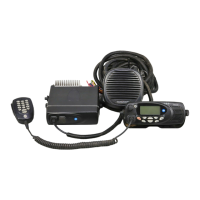112 General Information TM8100/TM8200 Service Manual
© Tait Electronics Limited November 2007
4.3 Servicing Precautions
Introduction This section discusses the precautions that need to be taken when servicing
the radios. These precautions fall into the following categories:
■ mechanical issues
■ compliance issues
■ anti-static precautions
■ transmitter issues.
Service technicians should familiarize themselves with these precautions
before attempting repairs of the radios.
Use of Torque-
drivers
Apply the correct torque when using a torque-driver to tighten a screw or
nut in the radio. Under-torquing can cause problems with microphonics and
heat transfer. Over-torquing can damage the radio. The illustrations in
“Disassembly and Reassembly” on page 135 show the correct torque values
for the different screws and nuts.
Non-scratch Bench
Tops
Use workbenches with non-scratch bench tops so that the mechanical parts
of the radio are not damaged during disassembly and re-assembly.
(The workbench must also satisfy the anti-static requirements specified
below.) In addition, use a clear area of the bench when disassembling and re-
assembling the radio.
Compliance
Issues
Note The radio is designed to satisfy the applicable compliance regula-
tions. Do not make modifications or changes to the radio not
expressly approved by TEL. Failure to do so could invalidate com-
pliance requirements and void the Customer’s authority to operate
the radio.
Sealing of Radio To maintain the sealing of the radio to IP54 standards, ensure that all bungs
and seals are fitted after servicing the radio. These are for the auxiliary, RF,
external options, and programming connectors:
■ bung for auxiliary connector
■ rubber seal for RF connector
■ bung for aperture for options connector (connector not fitted)
■ cover seal for options connector (connector fitted).
In addition, ensure that the grommet sealing the aperture to the microphone
connector of the control head is properly fitted.
ESD Precautions For information about anti-static precautions and the dangers of electrostatic
discharge, refer to standards such as ANSI/ESD S20.20-1999 and BS EN
100015-4 1994 or go to the Electrostatic Discharge Association website
www.esda.org/.

